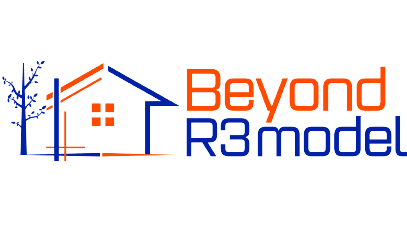Master the Kitchen Dance: How to achieve a flawless kitchen flow

Posted on 10 Oct, 2025
Your kitchen is the heart of your home, and how you move within it dictates whether cooking is a chore or a joy. A kitchen with a good "flow" minimizes wasted steps, reduces stress, and makes meal preparation feel intuitive. It's the difference between a clumsy shuffle and a graceful dance.
Whether you're planning a full renovation or just looking to optimize your current space, understanding the core principles of kitchen flow can revolutionize your cooking experience.
The evolution from triangle to zones
For decades, kitchen design was dominated by the "kitchen work triangle," a concept that places the sink, stove, and refrigerator in a triangular formation. This was a groundbreaking idea for efficiency, but it's since been modernized.
Today's kitchens are often multi-functional hubs for cooking, entertaining, and daily life. The modern approach, known as zone planning, is a more flexible and customizable strategy that divides the kitchen into dedicated zones for specific tasks.
The most common kitchen zones include:
- Consumables: The refrigerator and pantry, where you store all your food.
- Non-Consumables: Storage for dishes, cutlery, pots, and pans.
- Prep: The primary countertop space used for chopping, mixing, and getting ingredients ready.
- Cooking: The area around your stovetop and oven.
- Cleaning: The sink and dishwasher area.
How to design your kitchen for optimal flow
Designing your kitchen for maximum efficiency is all about strategic planning and common sense.
1. Group items where they are used
The most powerful principle is to store items in the zone where you will use them.
- Prep zone: Keep knives, cutting boards, mixing bowls, and prep utensils in drawers and cabinets near your main countertop.
- Cooking zone: Pots, pans, cooking utensils, spices, and oils should be stored within an arm's reach of your stove or cooktop.
- Cleaning zone: Store cleaning supplies under the sink and place cabinets for dishes, glasses, and cutlery right next to the dishwasher.
2. Respect the path of food
Visualize the path that your food takes, from unloading groceries to cleaning up after a meal.
- Start with storage: The consumables zone (fridge and pantry) should be near the kitchen's entrance to make unloading groceries easy.
- Prep to cook: The prep zone should be situated between the sink and the stove, creating a seamless flow from washing and prepping to cooking.
- Serve and clean: The cleaning zone should be near your cooking area for easy clean-as-you-go habits, and near the non-consumables storage for quick unloading of clean dishes.
3. Maximize your storage
Smart storage solutions can prevent a cluttered kitchen and save you from unnecessary searching.
- Use your drawers: Install pull-out shelves, drawer organizers, and dividers to keep items visible and accessible. This eliminates the need to rummage through deep cabinets.
- Go vertical: Use wall-mounted racks or magnetic knife strips to keep frequently used tools within easy reach. In small kitchens, this frees up valuable counter space.
- Tackle the corners: Lazy Susans or "magic corner" pull-outs can transform awkward corner cabinets into functional, accessible storage.
4. Design for your body
Good kitchen flow isn't just about the layout; it's about making the space work for you. Ergonomics is the practice of designing the environment to fit the user, and it can save you from physical strain.
- Find the right height: Countertops that are too high or low can lead to back pain. The ideal height is slightly below your elbow, allowing you to chop and stir without hunching.
- Mount appliances: Consider raising wall ovens to waist or chest level so you don't have to bend down to lift heavy dishes.
- Use drawers for heavy items: Store heavy pots and pans in low, full-extension drawers rather than on a high shelf or in a deep, dark cabinet.
Small habits, big impact
You don't need a full remodel to see a difference in your kitchen's flow. Here are some simple habits you can start today:
- Mise en place: Adopt this professional chef's technique by prepping all your ingredients before you start cooking.
- Clean as you go: Wash tools and wipe down surfaces as you work to minimize the final clean-up.
- Designate a scrap bowl: Keep a small bowl on your counter for peels and trimmings while prepping. This saves you dozens of trips to the trash can.
By applying these principles, you can transform your kitchen from a source of frustration into a streamlined, efficient, and calming environment where you can truly enjoy the art of cooking.
Get in Touch
How Can We Help You Today?
Our team of experts is here to cater to your unique needs. We are dedicated to providing you with exceptional service and a personalized experience. Contact us today by sending a message, and we'll promptly respond with a free estimate tailored to your project. Your satisfaction is our priority, and we look forward to assisting you soon.
